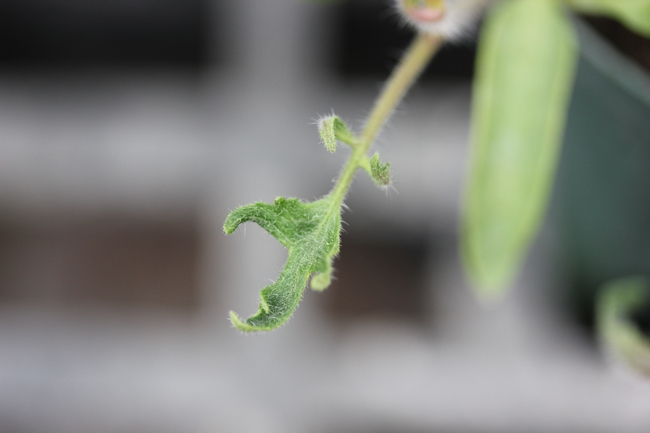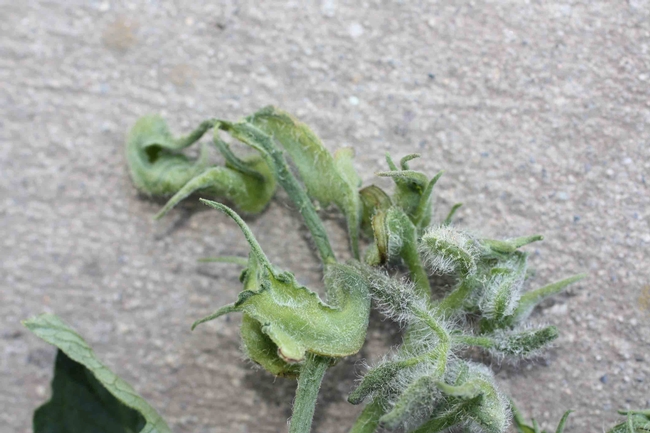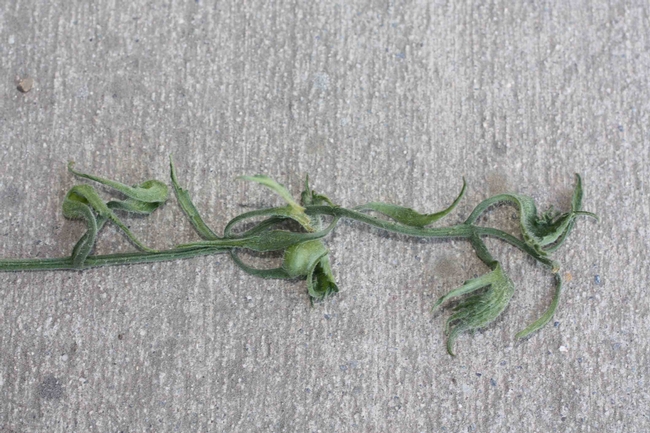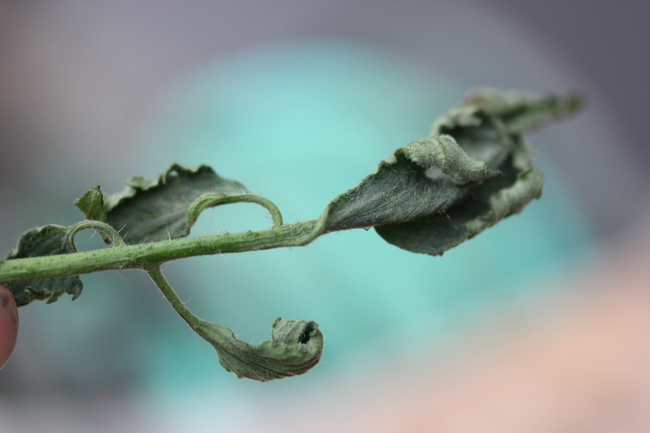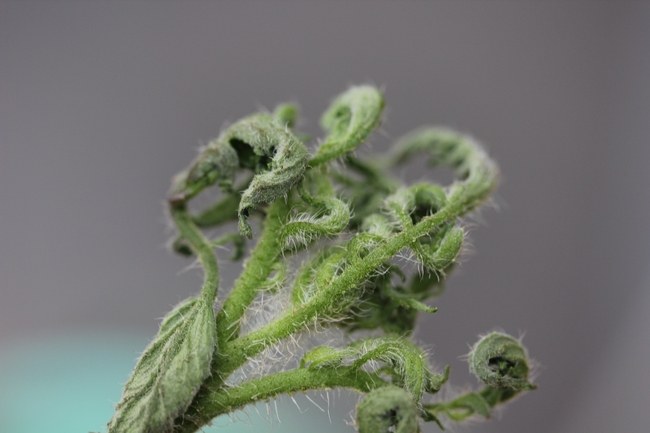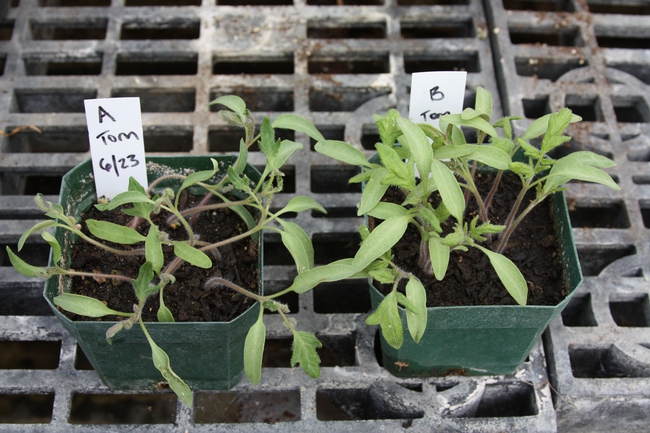Photo 1. Cupping of tomato leaf
Photo 2. Twisting of leaves
Photo 3. Strapping of leaves
Photo 4. Characteristic frilling of leaf edges
Photo 5. Severe curling of leaves
Photo 6. Plant on left grown in affected soil; plant on right grown in affected soil with activated charcoal
We confirmed that the herbicide originated in the soil by planting small pots with the affected potting mix with and without activated charcoal. Photo 6 show the difference in growth between pots with and without activated charcoal (plants grew more or less normal where activated charcoal was added to the soil). In the case of municipal yard waste, there is a large range of possible sources of herbicides: turf clippings, weeds or woody plants. Herbicide residue carryover from clopyralid applied to turf was shown to survive the composting process and damage subsequent crops grown on the composed residue; label restrictions were added to the clopyralid label that restricted the use of lawn clippings from clopyralid treated turf for use in making compost or as a mulch. It is unclear what chemical is the cause of the current set of issues that we have been dealing with here on the Central Coast. The situation that I am describing is not a huge issue, but it is interesting that herbicide carryover shows up with regularity and can cause severe problems in some situations.
